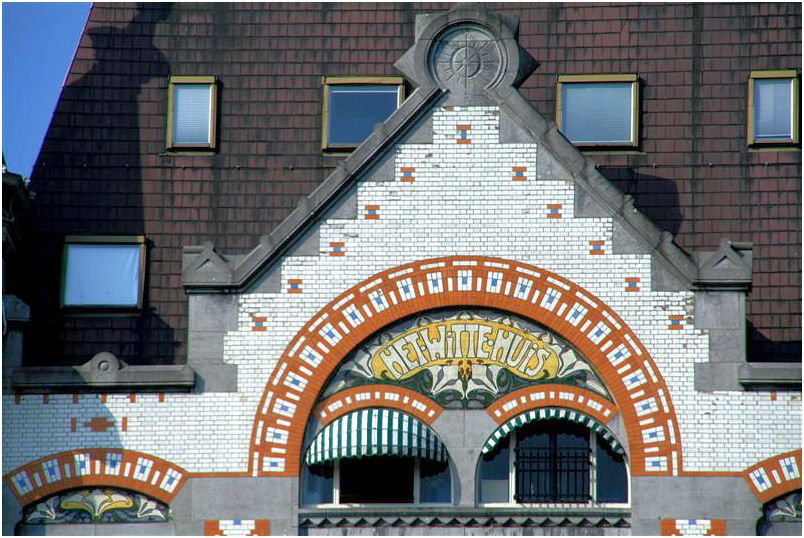#4900. The "Kaffehuset" Façade: An Exquisite Example of Northern Art Nouveau with a Distinctive Stepped Gable
The image showcases a fragment of a historical building façade executed in the Northern Art Nouveau style (likely from the early 20th century). This architectural monument demonstrates characteristic features of Jugendstil or Art Nouveau with elements of the National Romantic style that was popular in Scandinavian and Baltic countries.
The decorative treatment of the building's gable draws particular attention. The main part is constructed of white brick, effectively contrasting with the dark tiled roof. The upper part of the gable is adorned with a stepped form featuring a distinctive medallion at its apex, creating an expressive silhouette. Along the perimeter of the gable runs decorative brickwork in orange-red, forming a geometric pattern typical of Northern Art Nouveau.
The central element of the composition consists of two arched windows united by a common decorative frame. Above them is the sign "Kaffehuset" (Coffee House), executed in Art Nouveau style using artistic ceramics or stained glass. The arches are accentuated by green and white striped awnings, adding not only decorative value to the façade but also functionality. The lateral parts of the façade also feature small gables with arched elements that echo the motif of the central part.
The façade's composition demonstrates a carefully considered interplay of textures, materials, and color accents characteristic of Art Nouveau architecture. The building reflects the ambition of architects of that period to create a unified artistic work, where every detail, from the overall composition to the typography on the sign, is subordinated to a single stylistic concept.
